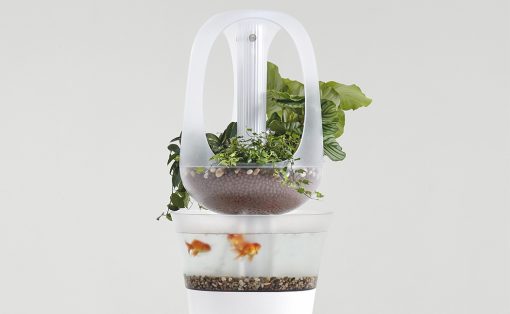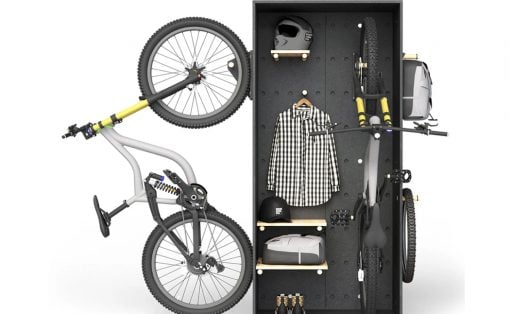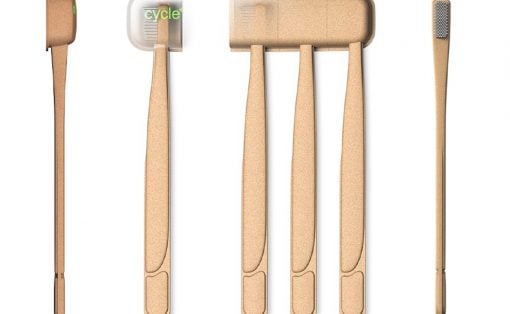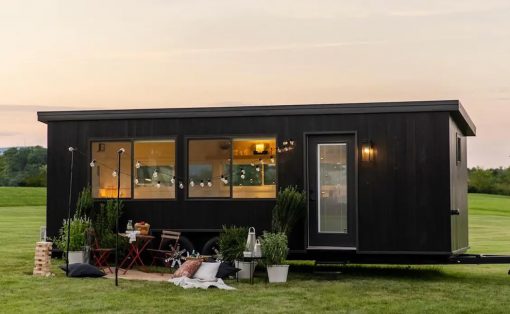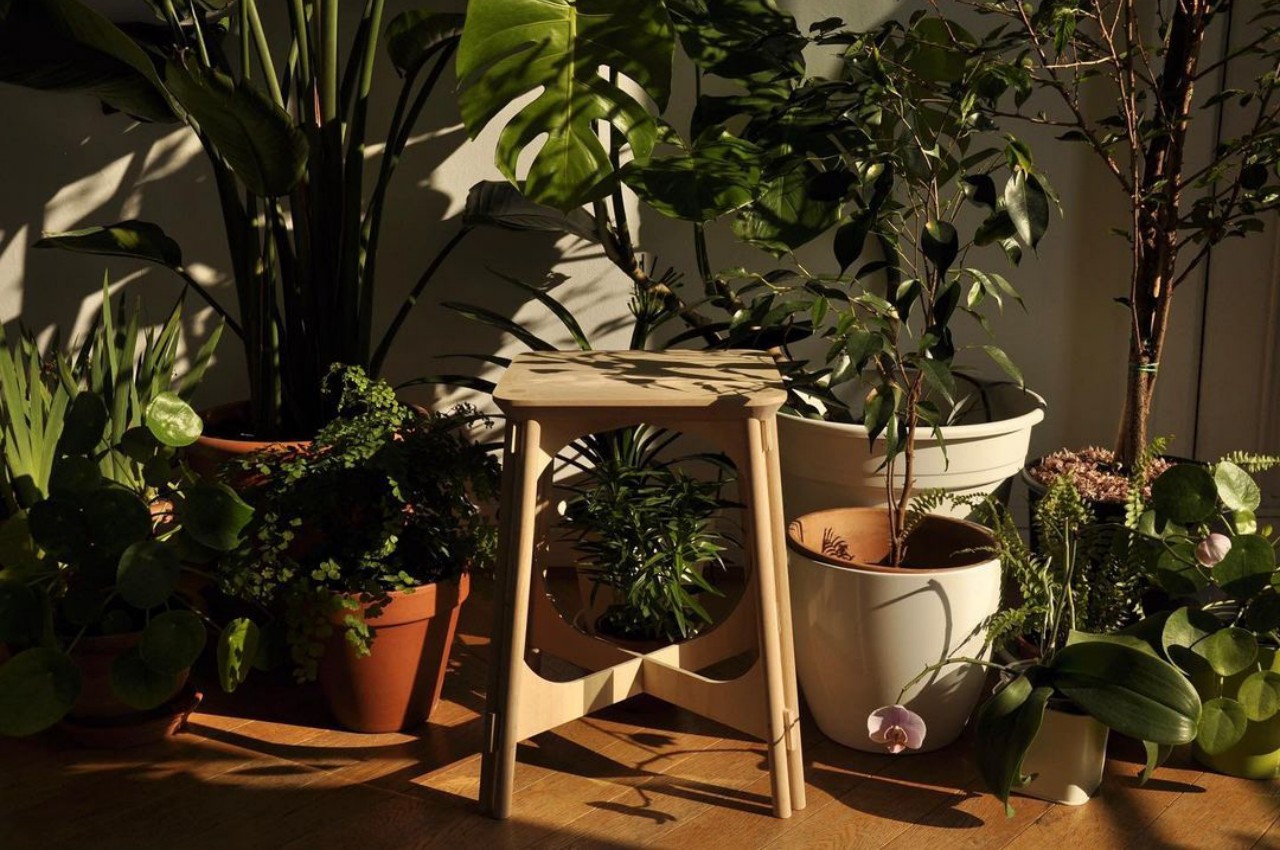
Stools are probably the most overlooked type of furniture there is. You will almost always find them, forgotten and barely used, in some corner of our homes. When truth be told, they’re much more functional and ergonomic than they are given credit for! They’re compact, and a great space-saving furniture option for our modern homes. They are also super portable! This collection of stools not only provides a healthy seating experience while promoting a good and stable posture but most of them are created from sustainable materials as well. It’s time to cast aside chairs, and maybe adopt stools as your preferred seating medium. From rock-inspired Ottoman stools to a side table that doubles up as a stool – these furniture designs have converted me into Team Stools for sure!
1. The Plastic Translation Stool
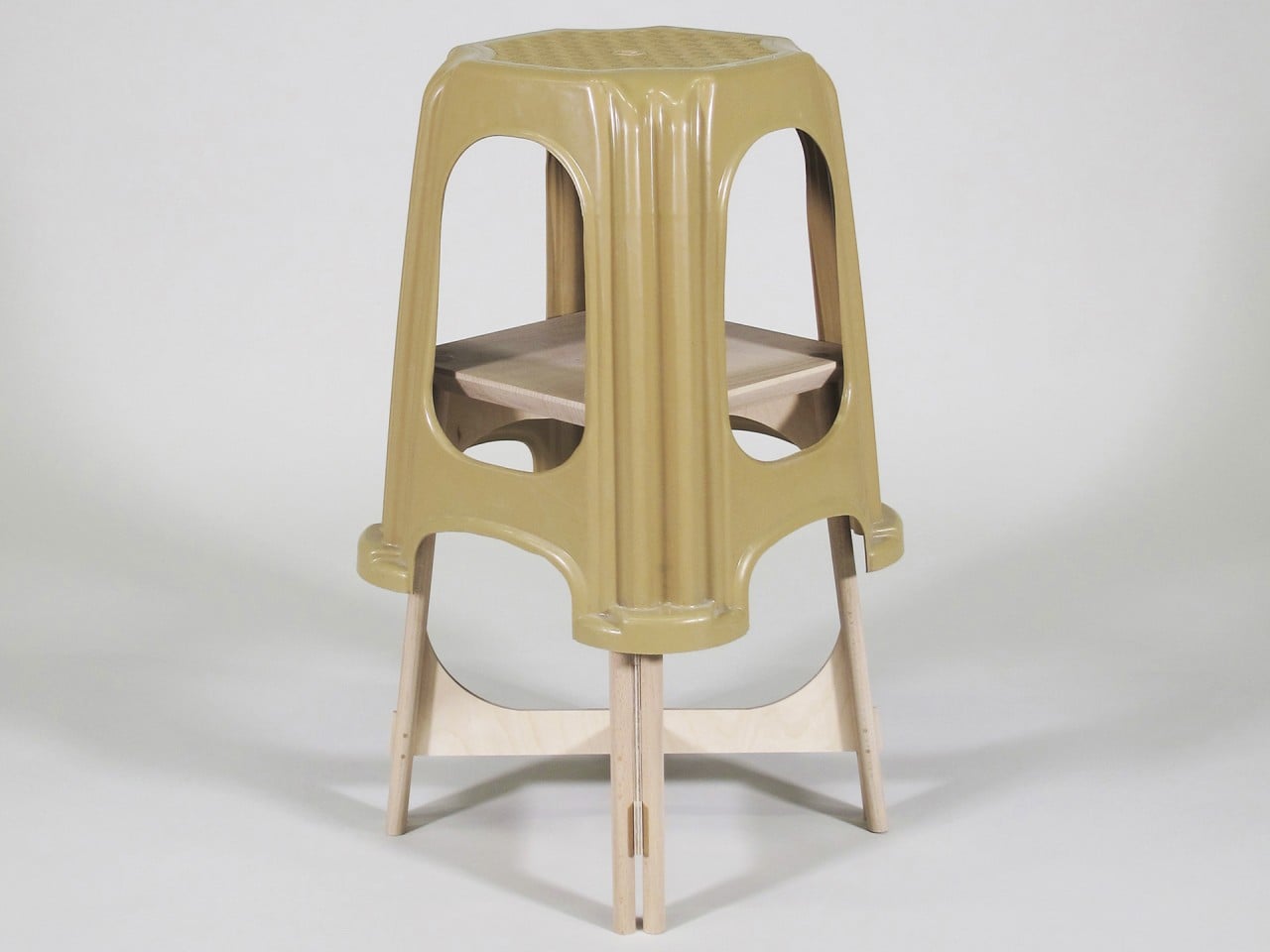
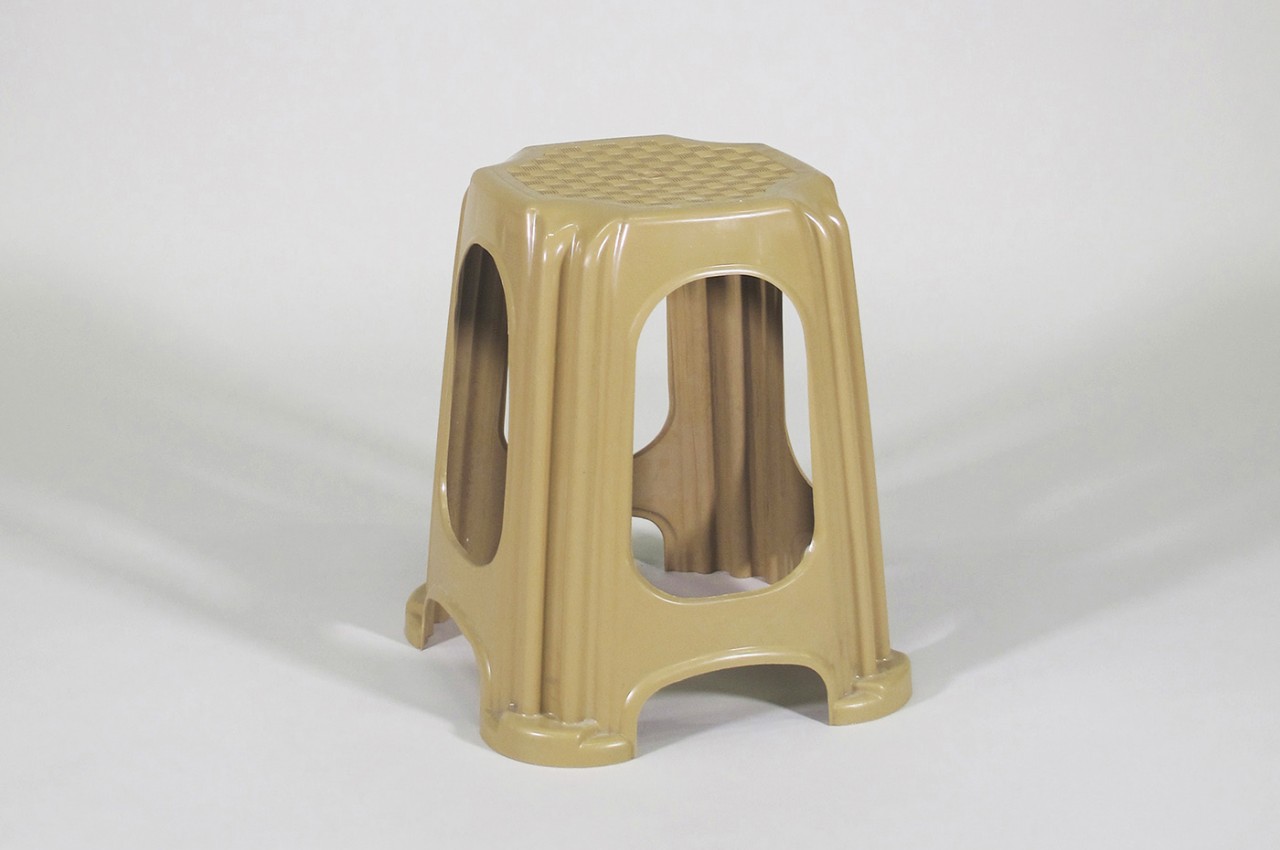
The Plastic Translation Stool design tries to reinterpret the lines of the plastic stool instead, resulting in a form that is somewhat similar yet also unique, giving the wooden stool its own character.
Why is it noteworthy?
The wooden legs alone, however, won’t be enough to offer the same stability as the plastic counterpart, so an additional element had to be added. This element comes in the form of Birch plywood buttresses. These buttresses distribute some of the force evenly across the beechwood legs, which, in turn, hold the buttresses together. The result is increased architectural stability and visual amplification, that gives the design an upgraded look.
What we like
- Doesn’t require screws or nails to be assembled
- A more sustainable option to the plastic stool
What we dislike
- Options to customise the stool are currently missing
2. That Stool
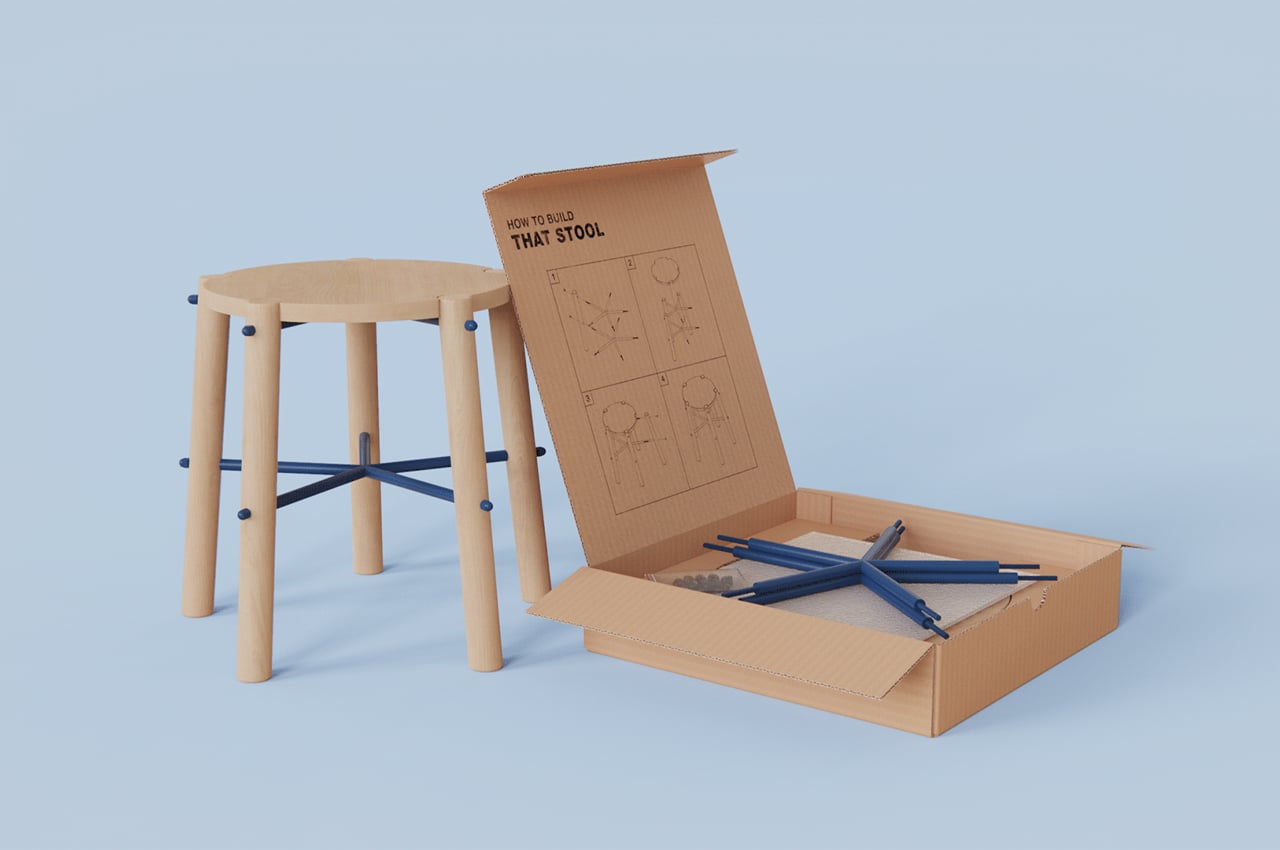
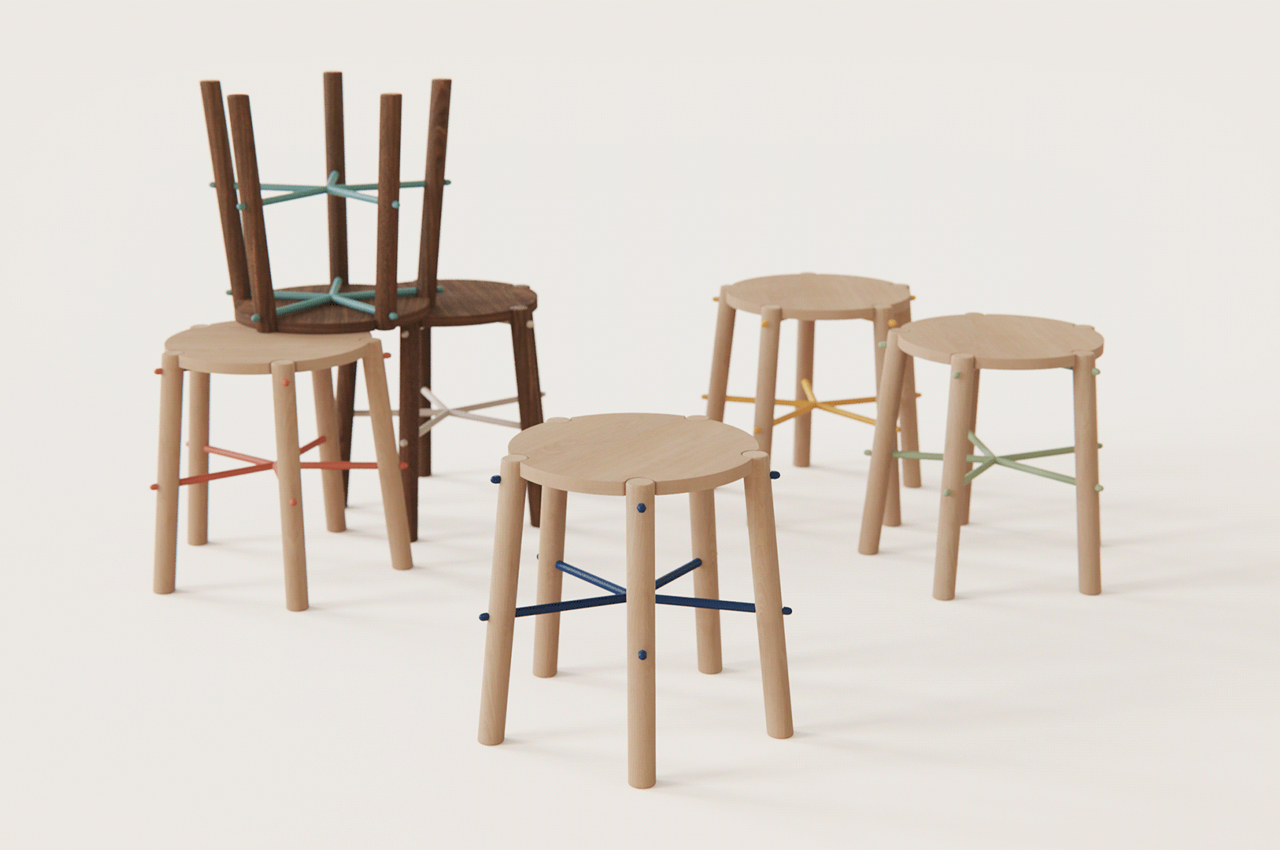
Small stools can come in handy anywhere. From empty art studios to crowded offices, stools can make the simple difference between sitting on the floor and having a seat. They especially come in handy when they’re designed for easy assembly and storage. Developed by Alondra Elizalde, That Stool is a flatpack DIY small stool designed with easy assembly to provide a practical means of having a stool anywhere, at any time.
Why is it noteworthy?
That Stool is comprised of only a few parts: a seat rest, five legs, a couple of star-shaped spindles, and some connecting nuts and bolts. All contained within a flatpack corrugated cardboard box, the parts of That Stool are easy to assemble with no additional hardware required. Following the imprinted instructions on the underside of That Stool’s top cover, users will first attach each leg to the corresponding screws on the star-shaped spindles. From there, connecting fasteners secure the legs and spindles in place, providing a sturdy bolster for the seat rest to mount.
What we like
- Assembled in only four steps without any additional hardware
- Can be used anywhere, at any time
- You can build it yourself!
What we dislike
- Looks like any other regular stool on the market and increased colour accents would help the design.
3. The Balanco Stools
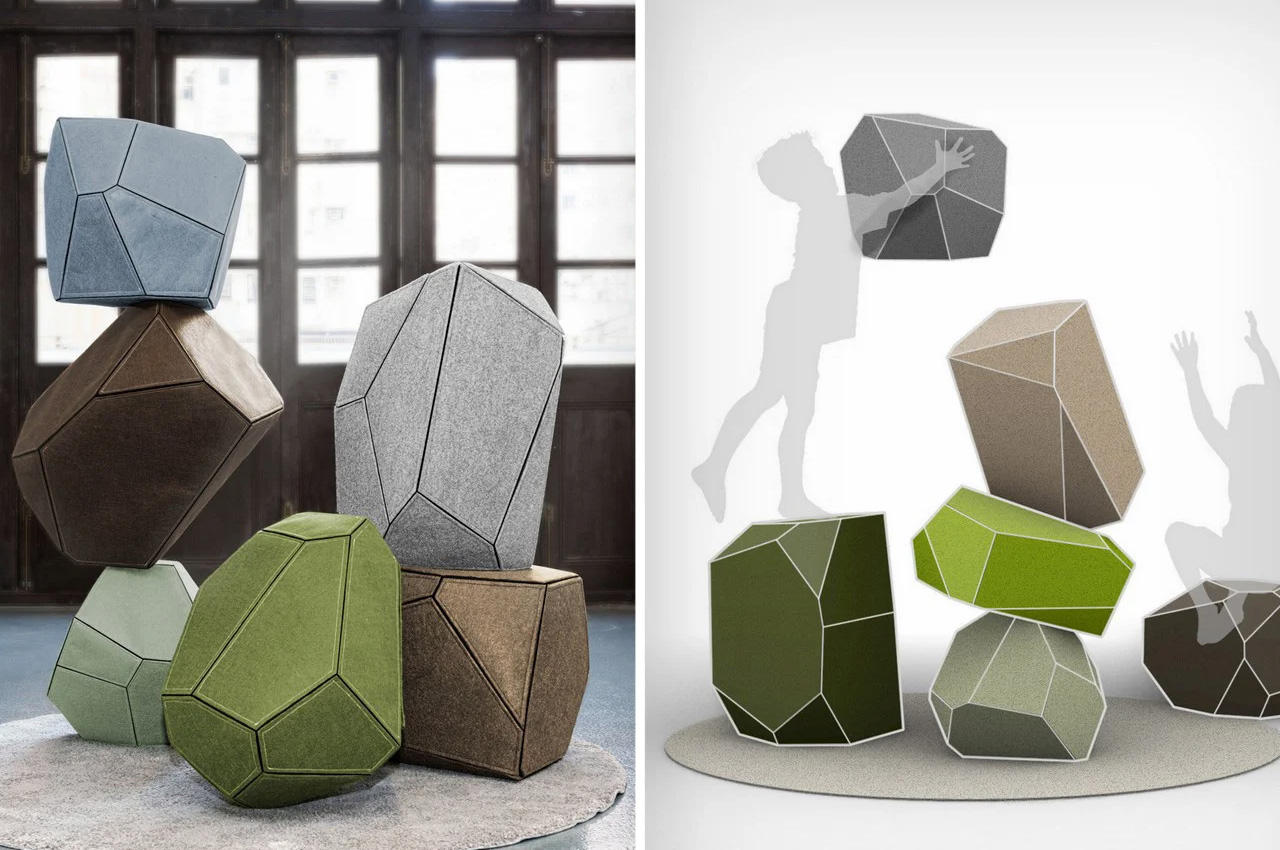
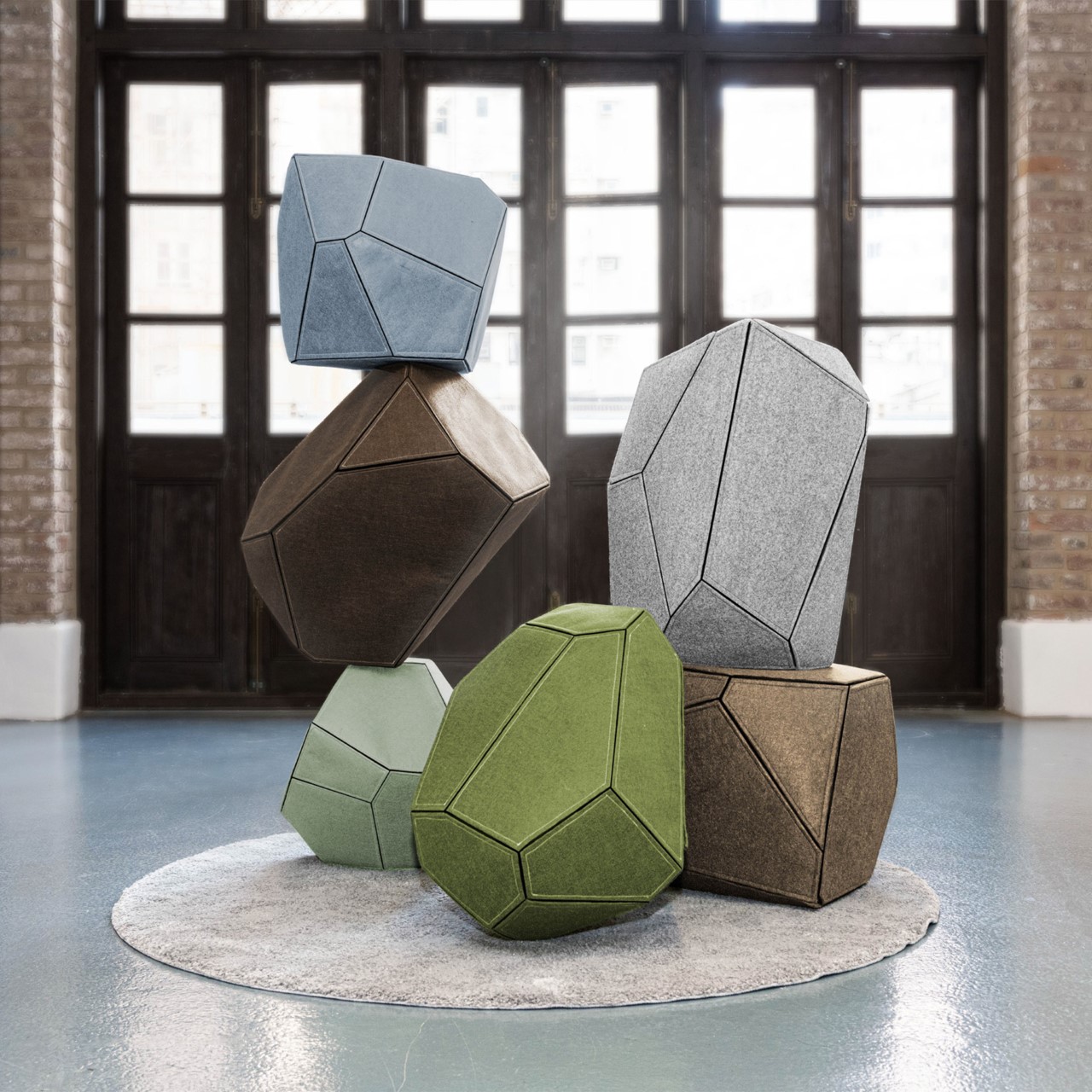
The origin of the Balanco stools is a rather interesting one. It was designed as a response to the pandemic when the entire world was forced to stay at home. Putting home decor at the forefront while also giving kids (and adults) something to play and interact with, the Balanco set of stools takes its inspiration from rocks and boulders, giving you the ability to stack them in different forms and formats, creating art in the process.
Why is it noteworthy?
The idea for the Balanco stools came from the Japanese practice of stacking pebbles to create towers. Traditionally, the pebbles mostly consist of rounded forms, designers Lisa Lai and Joel Wong decided that chiseled rock-like shapes would create more visual dynamism while offering a variety of flat surfaces that are ideal for stacking and layering.
What we like
- The poufs are deceptively light
- The individual surfaces remain relatively flat, so they stack on each other rather beautifully
What we dislike
- Made from felt, there is a higher chance of staining this design
4. The Swing Ao Stool
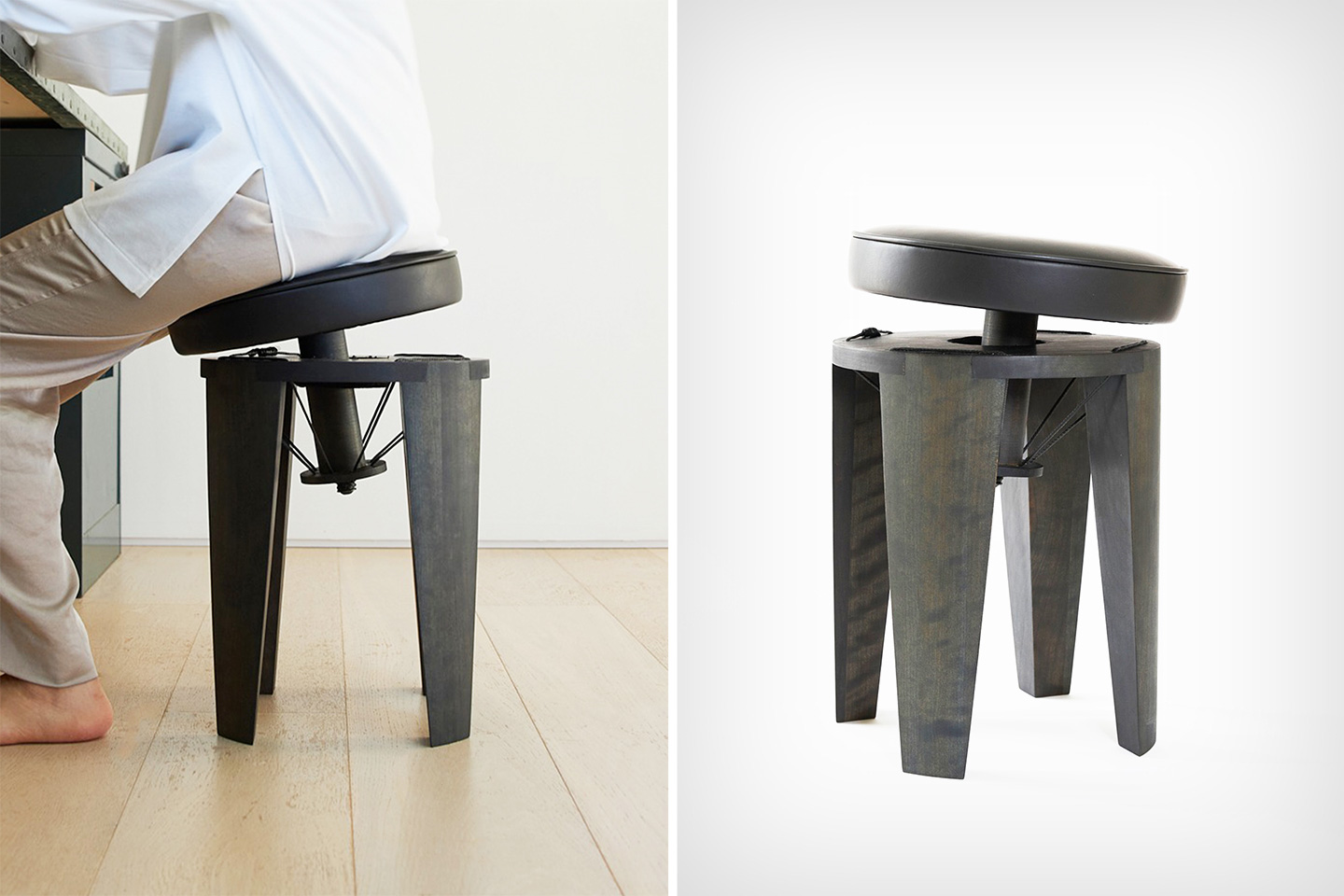
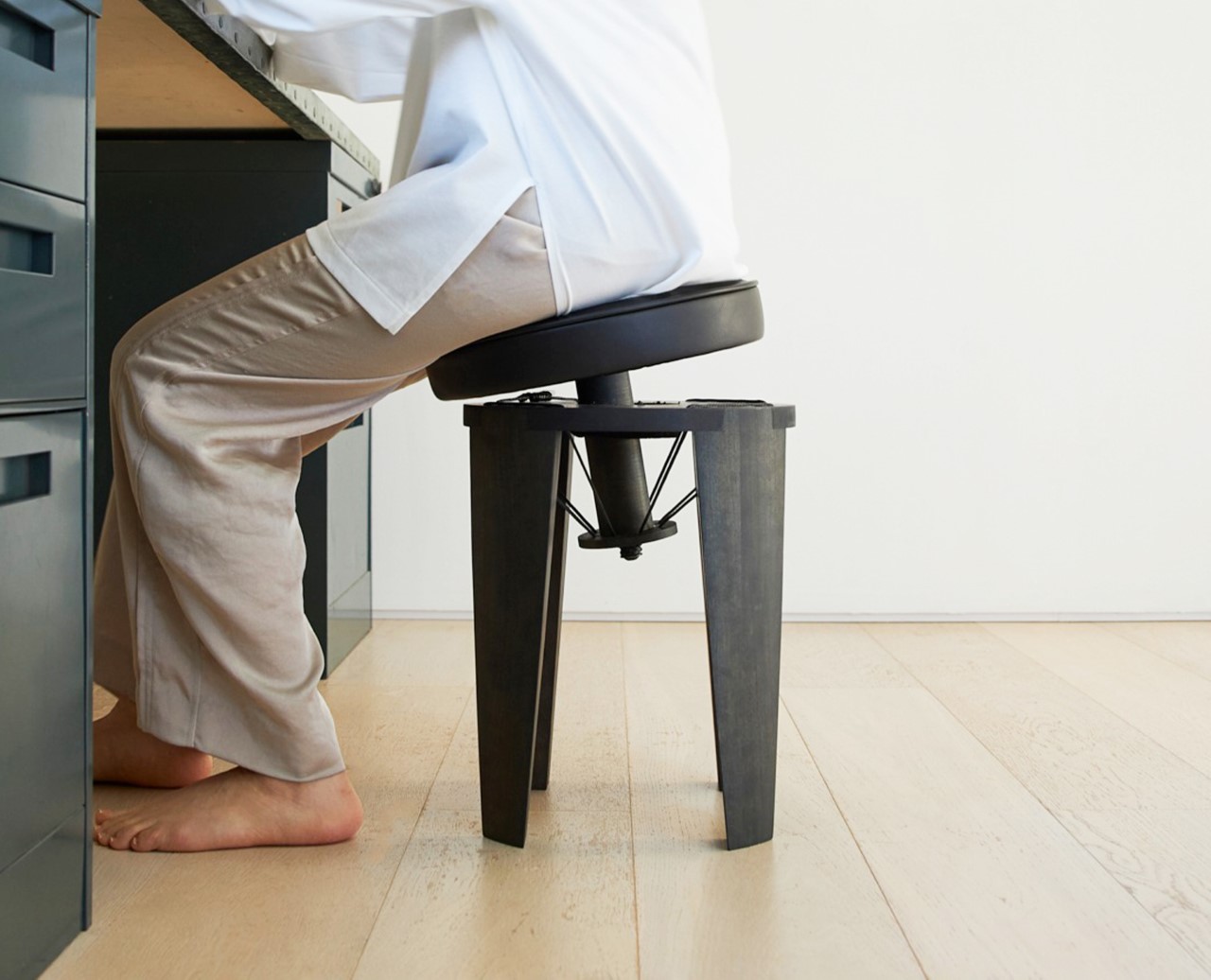
Dubbed the Swing Ao Stool, this little number by Takusei Kajitani explores a fun concept of using tension to emulate ‘softness’. Sort of how a hammock feels soft like a beanbag, although there’s no ‘cushioning material’ inside a hammock, the Swing Ao chair provides a level of flexibility thanks to the fact that the seat is, in fact, suspended from the chair’s four legs.
Why is it noteworthy?
The idea, says the designer, was born from a need to eliminate the sedentary lifestyle. “Most chairs have been designed on the idea that sitting is a static movement despite the human body being designed to move,” says Kajitani. “It forces our body to stay rigid for a long time.”
What we like
- The Swing Ao Stool promotes constant movement
- The chair’s unique design explores a special arrangement where the seat and the legs don’t really touch each other
What we dislike
- With a focus on functionality, the stool comes across as a rather chunky design.
5. The Winding Side Table
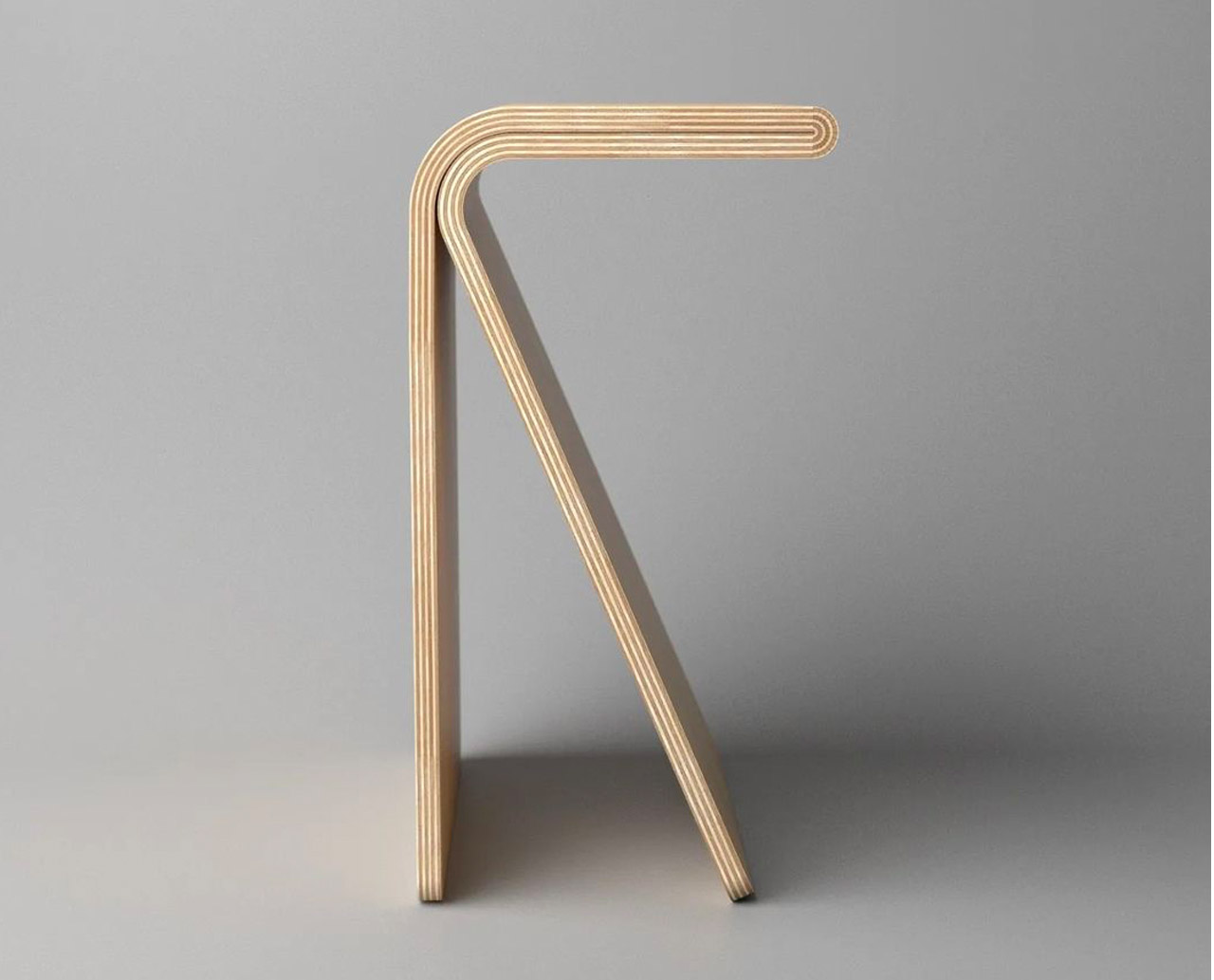
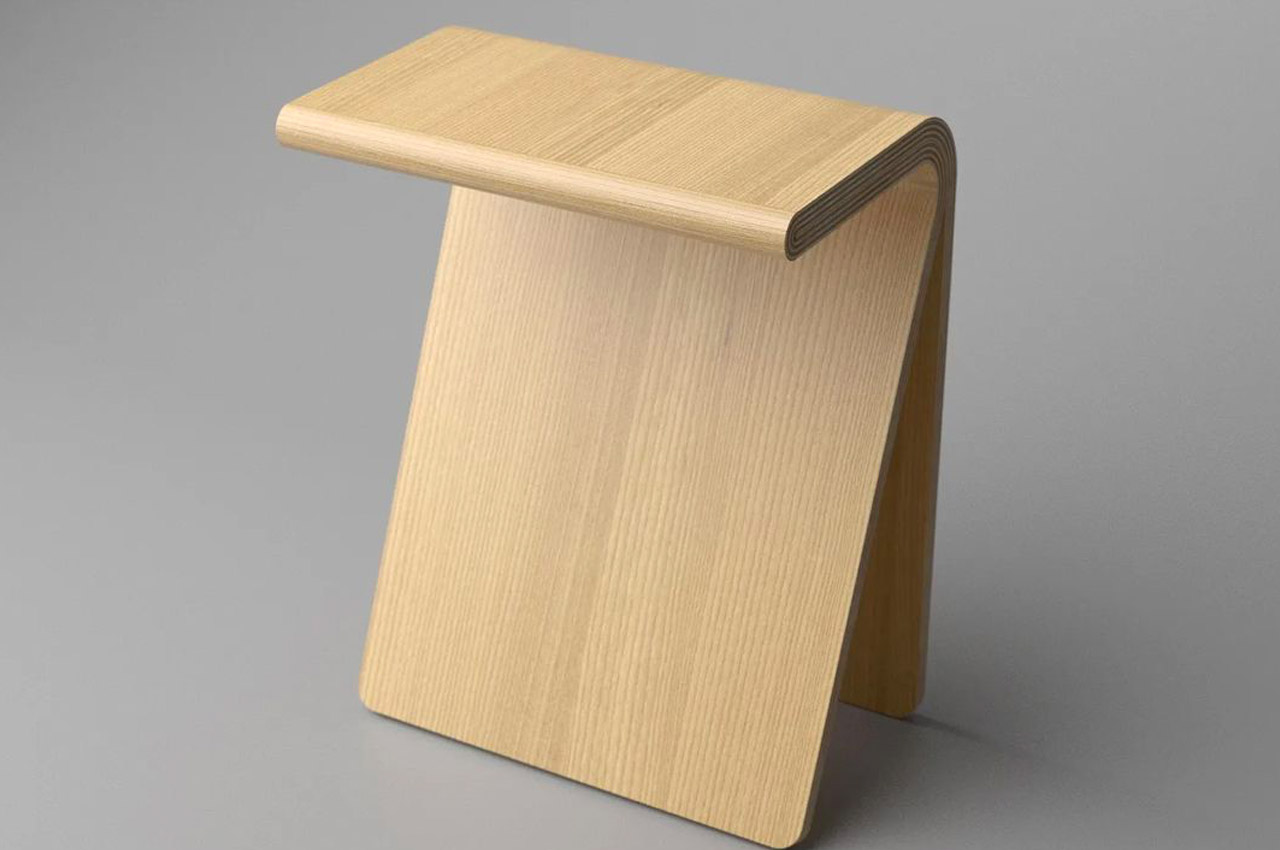
This minimalistic and warm side table also doubles up as a stool. Aktay’s designs are infamous for doubling up as something or the other and doing so extremely subtly and smartly. The furniture piece is like a continuous piece of plywood folded and bent into varying angles.
Why is noteworthy?
It artfully curves at the top to create a thick platform that functions either as a side table or a stool, depending upon your mood – whether you want to place your favorite vase or your bum on it.
What we like
- The curve which is formed to build the main platform of the design is its most stark highlight
- The Winding side table has a compact size, which makes it ideal for our modern-day cramped homes
What we dislike
- Its sleek form requires good balance for anyone wanting to sit on the stool.
6. Rice Husk Stool


Agriculture is not something that’s not necessarily associated with furniture. But for this designer that was looking for materials for sustainable designs, agricultural waste, specifically rice husk, became his inspiration and material. So the design of the reading stool became rice-inspired as well, with the round shapes of the actual chair seat and the stand itself giving off a “harmonious emotion” between the bionic design and the human who will be sitting on it.
Why is it noteworthy?
When it comes to sustainable materials, he proposes using a mix of rice husk and carbon, breaking them down and mixing the materials together and then using perfusion molding to shape it into the final chair design. The seat surface itself is made from braided straw but with the rice husk used as the base for the cushion. At the bottom of the stool, the straw is used as well. This brings the idea of sustainable design full circle, so to speak.
What we like
- The stool looks like a sculpture with an agricultural spin to it
- Sustainable + eco-friendly design
What we dislike
- As a reading chair, it looks uncomfortable to be sitting in for a long period of time
7. The Bond
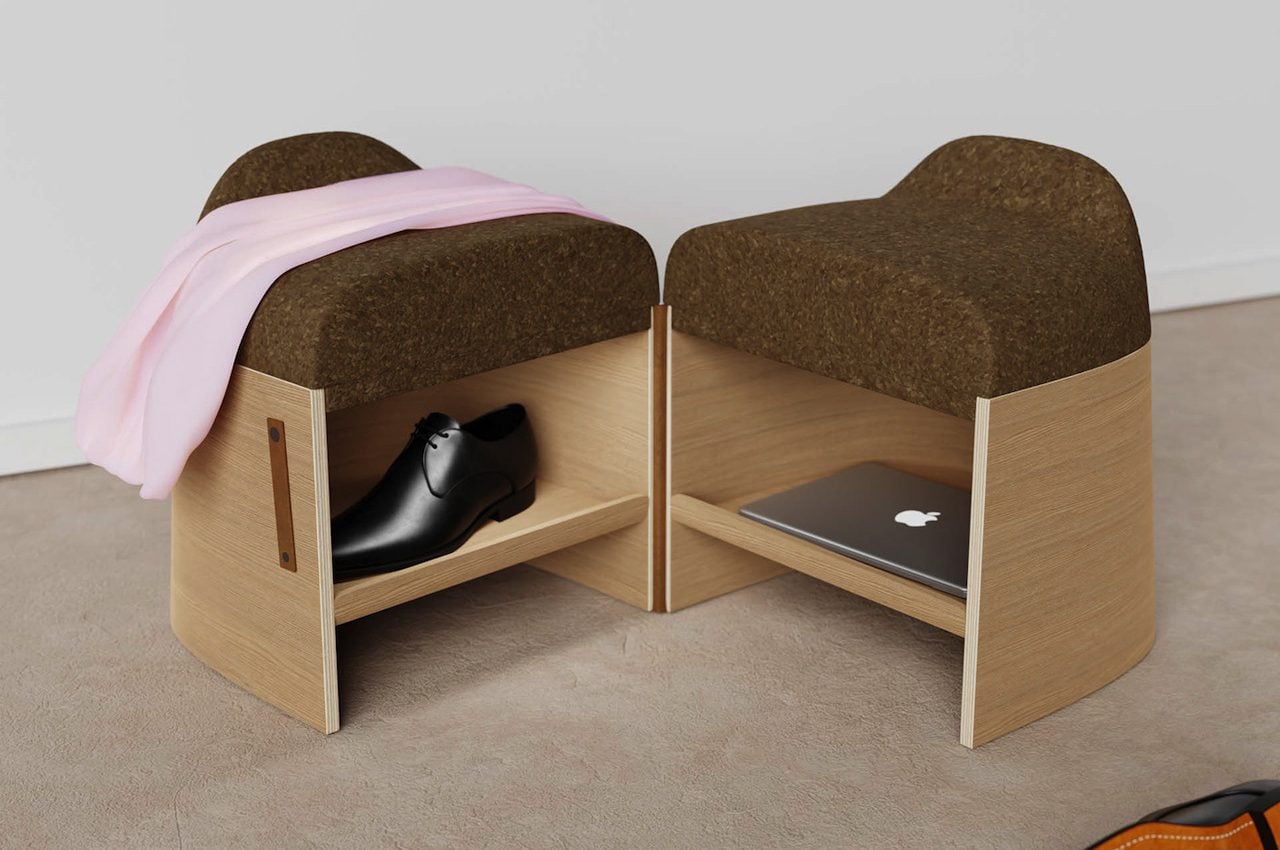
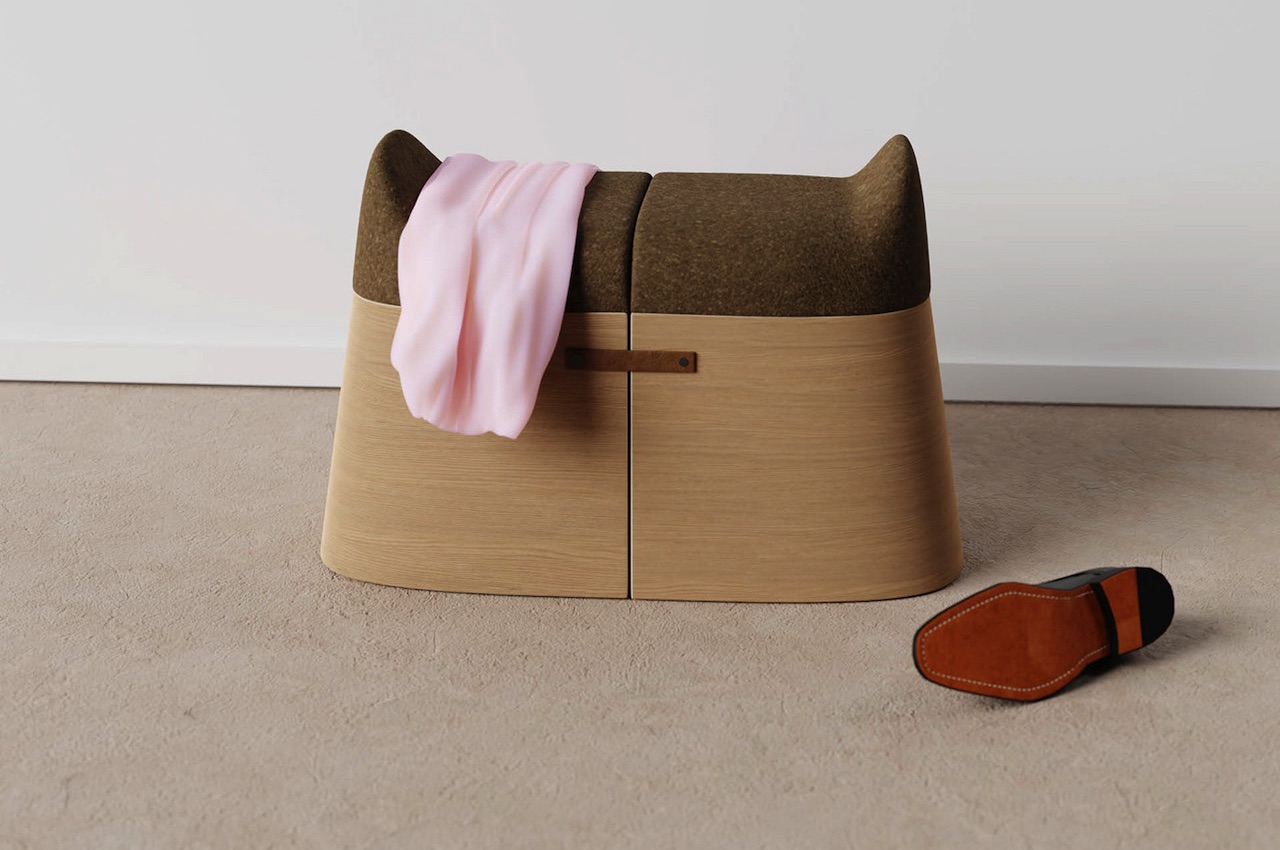
This is just a stool, but its particular purpose is to make two persons live in unity. How? You open the stool system and separate the parts to seat two persons. Some people will probably not understand the point because the stools are too close, but the Bond can be perfect for couples changes residences frequently.
Why is it noteworthy?
If you and your partner love going out, you can sit together on the stools while you wear your shoes and before you head out the door. Bond is just to be closer to one another because, you know, some couples just can get enough of each other. The Bond stool system also features some storage space inside. You can put anything inside, like maybe your shoes or your laptop. Likewise, you can probably put there your purse or just about anything you don’t want to forget.
What we like
- The Bond is mainly made of wooden material, so you know it’s durable enough to withstand the test of time
- Space-saving form
What we dislike
- Standalone design that cannot be added on or increased.
8. The Rubik Stool


When you hear the word Rubik, it brings to mind something that can be turned whatever way and can still be functional. Well, the Rubik Stool is somewhat like that as it can be “turned, flipped, and combined” so you can use it for whatever purpose you may have in your house. The furniture is specifically designed for spaces that cannot accommodate a sofa or shelves to store books, magazines, and other smaller knick-knacks.
Why is it noteworthy?
If what you need is somewhere to sit, you can have it upright with the seat on top. But you can also use the underlying part as storage for things like shoes, magazines, or whatever it is that you don’t mind being under your seat. If you want it to become a mini shelf, you just flip it over and now you have two layers where you can place books, toys, plants, or even some decorations. It’s not exactly modular but it can serve multiple purposes.
What we like
- Unique seat + shelf concept
- The furniture is specifically designed for spaces that cannot accommodate a sofa or shelves
What we dislike
- No complaints!
9. The Flightable Closet
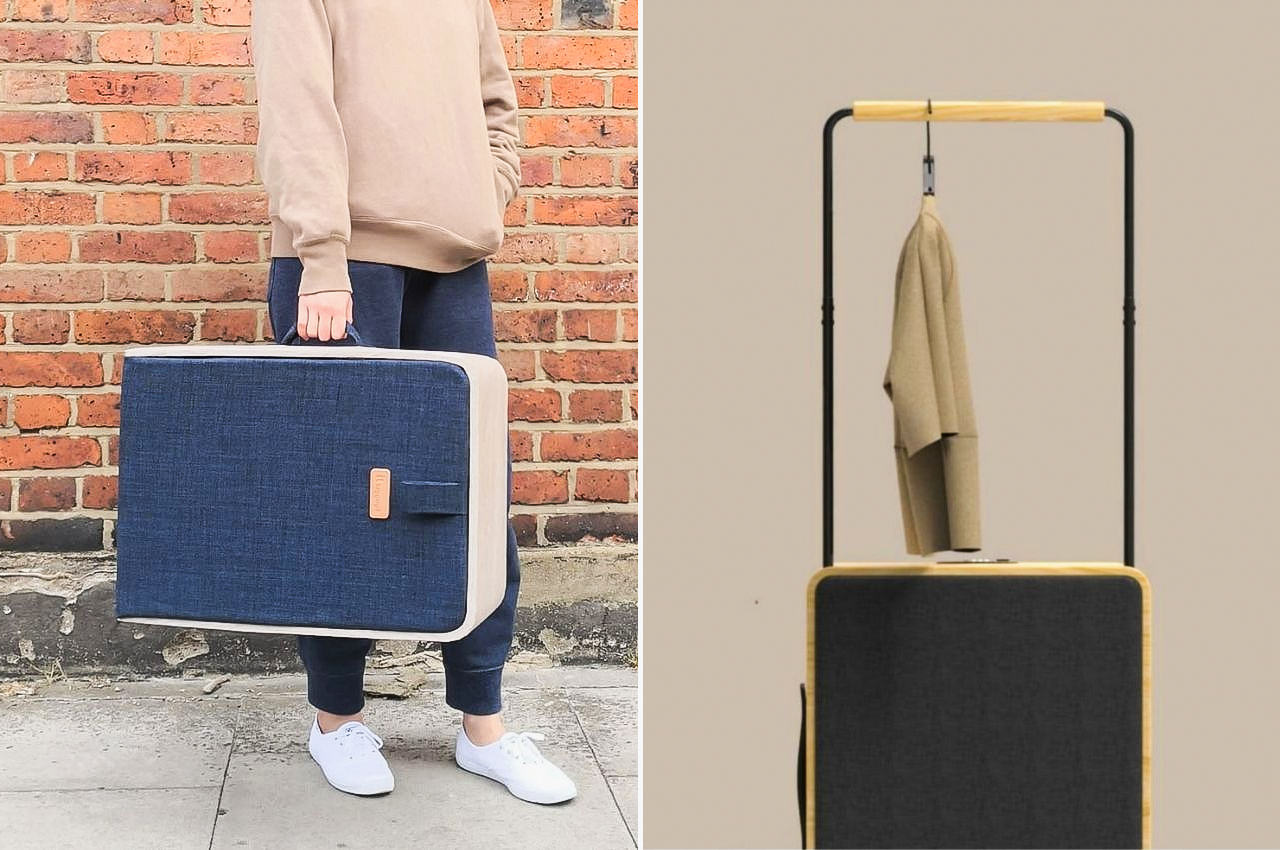

The Flightable Closet is a pretty interesting concept as it is not just a suitcase but is also a mini closet (as the name states) with a clothes rack. It can even function as a stool in case you would need one while at the airport or in the room where you’re currently staying in.
Why is it noteworthy?
The idea is to make your carry-on suitcase more than just an accessory where you try to fit in as many clothes and toiletries as possible. It is conceptualized both for frequent travelers and those who are living in small spaces and need extra space for their stuff.
What we like
- The telescopic handle of the suitcase can also serve as your clothes rack
- Multipurpose design
What we dislike
- Need to test the actual weight it can withstand when an actual life-size prototype will be created
10. The Tie Stool
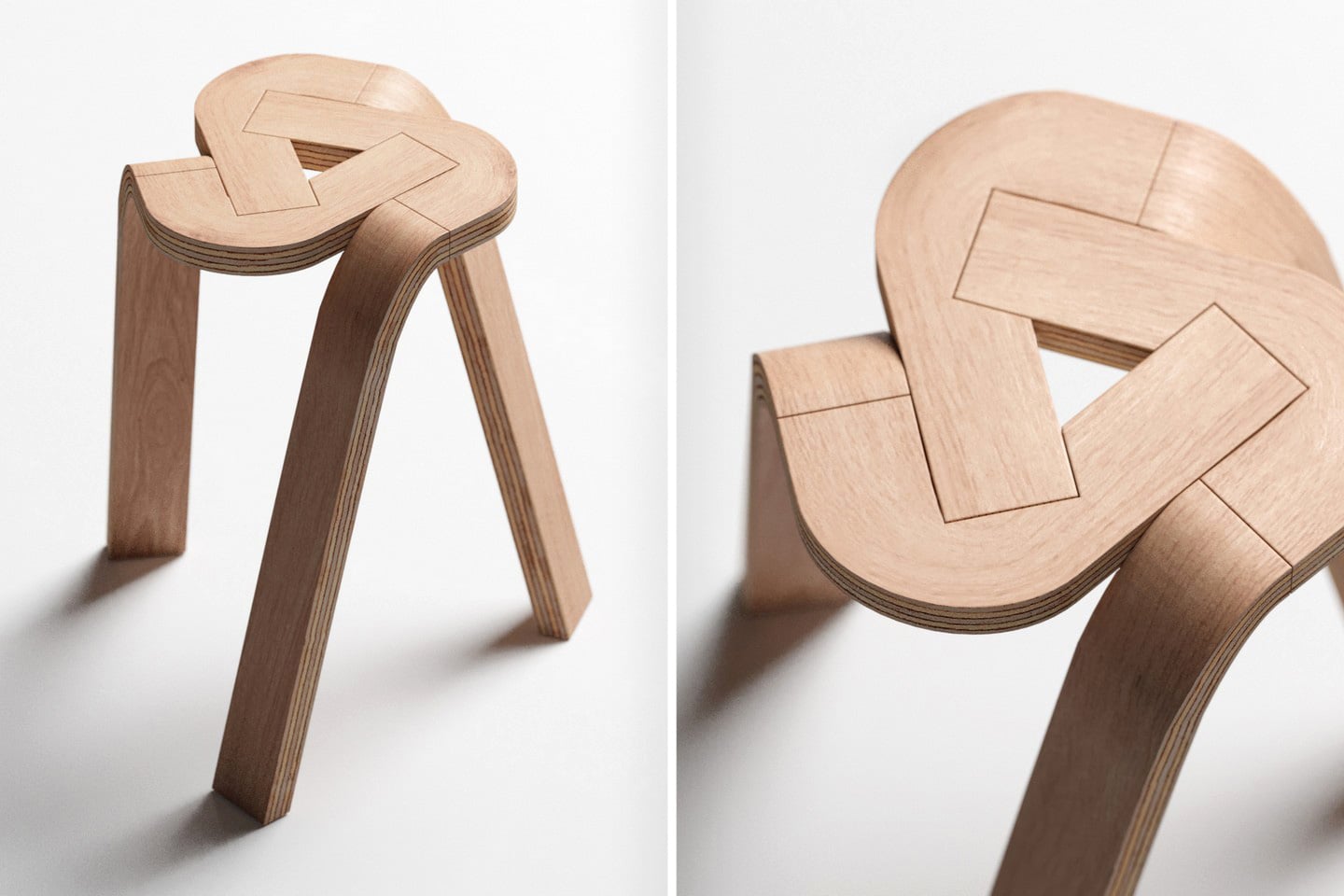
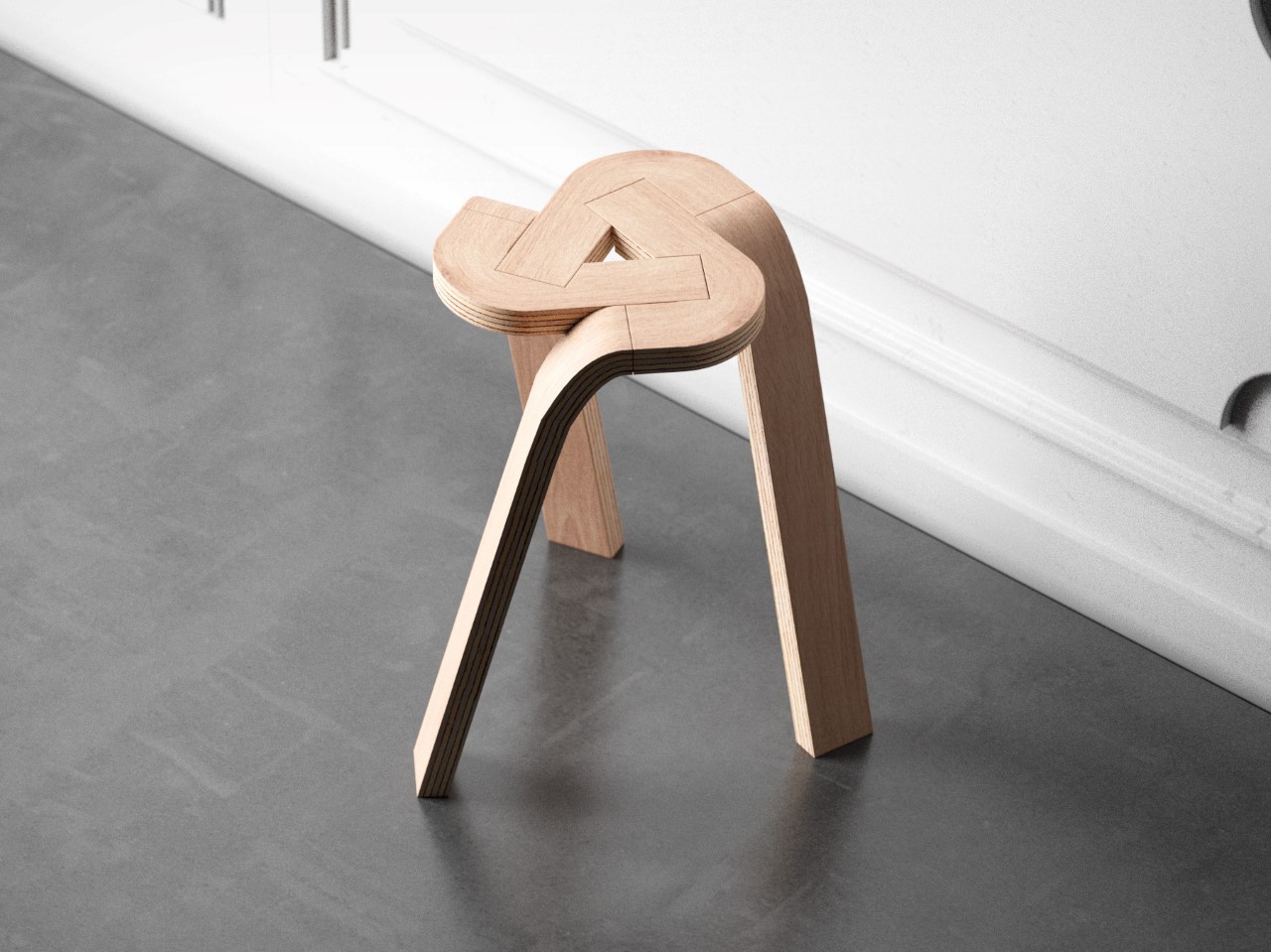
The Tie Stool’s beauty lies in its sheer simplicity – not just in design but also in materials. The stool comprises three bent plywood strips that conveniently lock into each other, creating a tripod form that you can easily sit on. The design could easily expand to accommodate more strips to create a 4-legged (or even 5-legged) stool, but the dynamic nature of having a tripod format really gives the Tie Stool its appeal. I don’t know about you, but I can’t unsee the Google Drive logo in the stool’s design!
Why is it noteworthy?
Fabricating the Tie Stool would require a few simple steps. The three plywood strips can, in fact, be split into 6 total parts (you can see the parting lines). The individual parts are formed using high pressure and temperatures that cause the plywood to bend and retain its shape, and cutting/finishing processes are performed on the parts to make them interlock into one another.
What we like
- The entire stool can potentially be flat-packed and shipped to customers
- It’s stackable
What we dislike
- Its compressed design means it needs a tabletop to add more space on the stool



